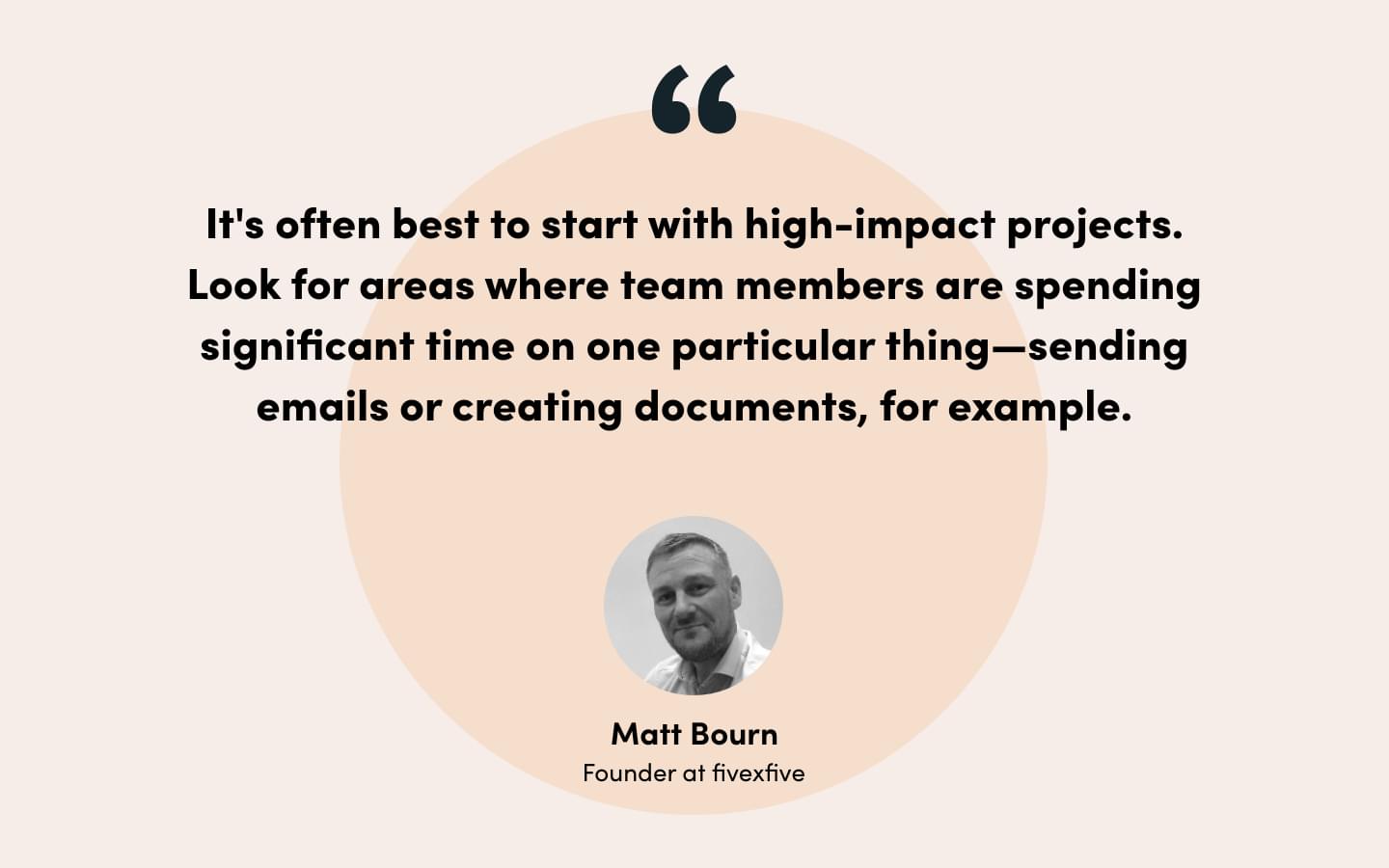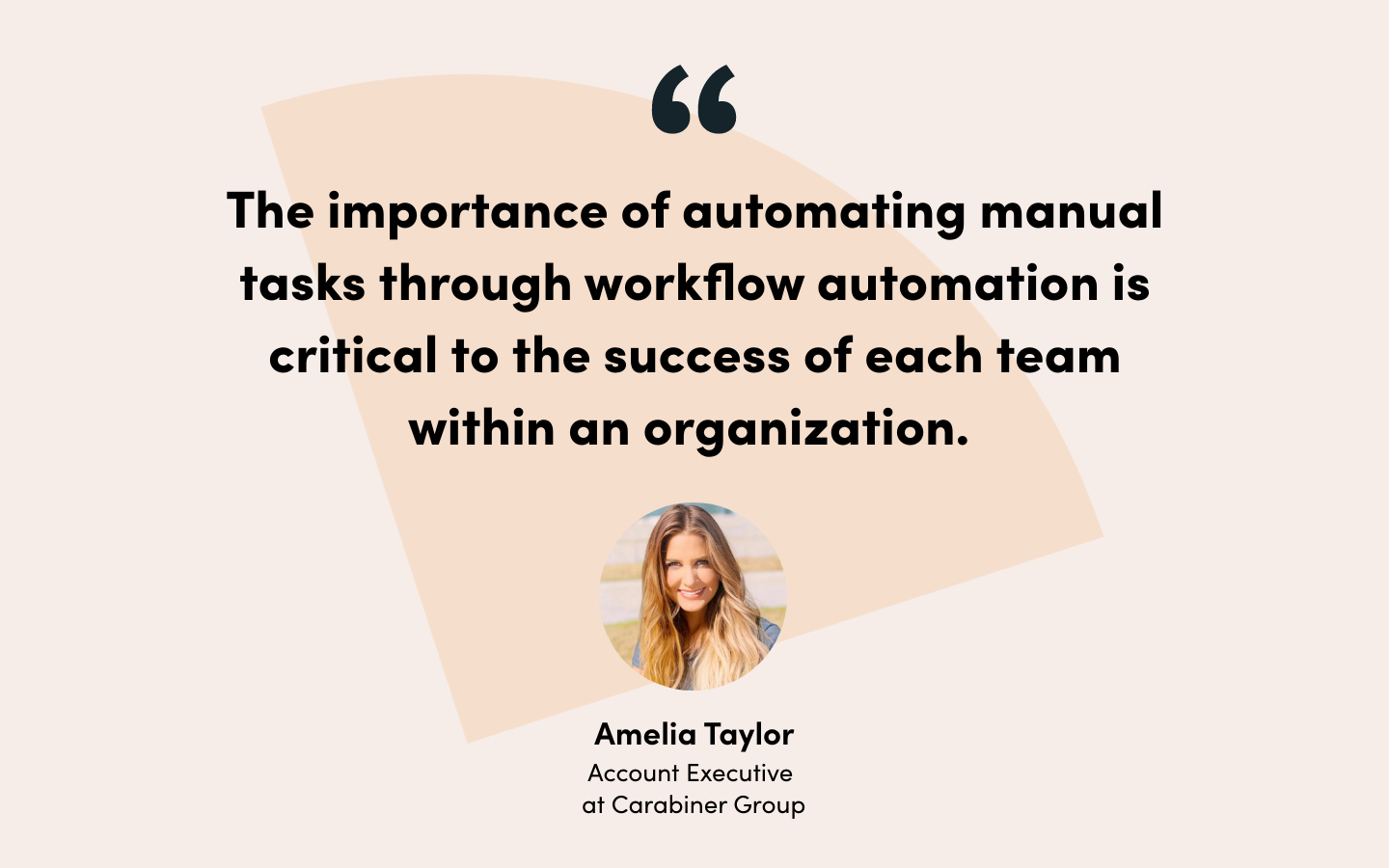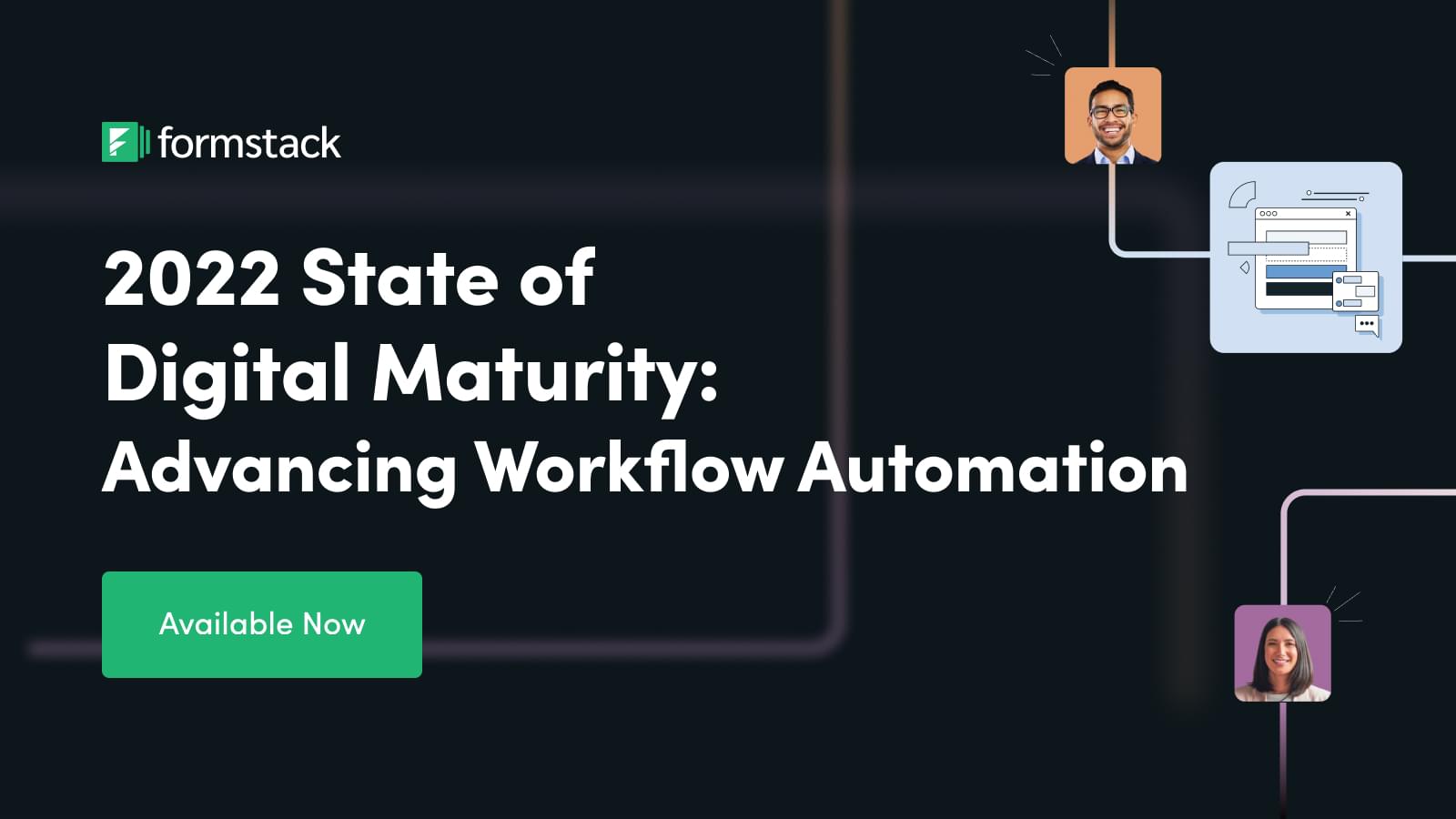Workflow automation is supposed to make your workday better. But when workflows don’t flow well across departments, chaos can ensue.
Whether you’re running several cross-departmental workflows or you’re about to begin your first large-scale project, there’s a lot to keep in mind to ensure your workflows run smoothly. When multiple teams or departments are involved, things can get complicated very quickly. Especially when you factor in details like opinions, budgets, and timelines.
So how do you keep everyone happy while building the best workflow possible? We asked automation experts to weigh in on the topic of building successful cross-departmental workflows. Here are their top tips:
1. Create Company-Wide Technology Standards
“I've been in the space for over 30 years and done thousands of projects to make disparate systems that weren't designed to talk to each other, talk to each other so that the data flows across departments. I would say the most prevalent issue I’ve seen is not having company-wide standards for technology. You'll see a lot of decisions are made based on acquisition cost, and then you end up with systems that won't talk with other systems.
Usually where I see companies going wrong is they work in silos. You've got departments making decisions about applications, and then one application doesn't talk to the next. They buy products that have proprietary databases that don't allow you to insert data or query data. Once you've done that, you're completely beholden to whatever vendor you've selected. That can lead to double, triple, quadruple data entry.
Every organization needs to assign a gatekeeper, if you will: someone who is responsible for those technology standards. The reality is it doesn't matter which department, although oftentimes it's IT or the CFO. If the company is large enough to have a Chief Technology Officer, that's obviously where it's going to fit.
But as long as someone has the governance and enough authority to say, ‘okay I'm not going to mandate what system you use, but here's the type of compatibility that you have to abide by.’ That really gives you the guideposts that you need to be successful.”
Dan Colby
Business Strategist & Technologist, Process Distillery
2. Map Everything Out
“The biggest hurdle is knowing where to start. Often, workflows aren't mapped at all, so the first step is to do that mapping to see what actually happens. It's important to see what can be automated and what should be done by a human. Automating a bad process can often exacerbate things and undermine confidence in identifying other automation opportunities.
Business workflows rarely happen in a vacuum. One step leads to another step in another team or department. When you are mapping your process, it's important to understand where the input comes from and what the output needs to look like to allow the workflow to seamlessly fit into the next step once it leaves your team. Marketing will need different data than Finance, so understanding what the full picture looks like is key to enabling all those in the chain to get the result they are looking for.

It's often best to start with high-impact projects. Look for areas where team members are spending significant time on one particular thing—sending emails or creating documents, for example. Using a simple return-on-investment calculator can also be helpful in putting some metrics (time spent/saved) against each workflow and building a business case for undertaking the scope of automation projects. When the time savings are significant and obvious, it’s easier to get buy-in to make changes and try new things.”
Matt Bourn
Founder, fivexfive
3. Get All Stakeholders Involved
“Ensure buy-in from all stakeholders. Your new tool or platform won't solve anything if your end users won't use it. Similarly, managers and senior leaders of the affected teams need to be able to see the value in investing time and resources into adopting a new system or process.
Conduct interviews and collect feedback from stakeholders at all levels to ensure understanding and alignment throughout all stages of the implementation. Trust me, no one likes surprise software rollouts!
Plan for User Acceptance Testing. This best practice is to always roll out to a small group of users and gather feedback prior to rolling a new tool or system out to the entire department or company. And don't forget post-launch monitoring! What's your definition of success, and how can you measure whether you have attained those results?”
Sarah Zarling
Senior Product Ops Manager, Color

4. Try the “DO IT” Framework
“Departments are dependent in an organization, and how well each department operates is often a function of the workflows that exist between the departments. A contributing factor to how efficient and effective a department is comes down to the data flow in workflows.
For organizations looking to identify and improve upon weak workflows, try the “DO IT” framework:
Step 1: Document
Departments need to know their inputs and outputs; a regular task that may take one department five extra minutes, may save the dependent department one hour.
- Visualize the workflows with flowcharts.
- Indicate the facilitating apps.
- Make note of the data points and logic paths.
Step 2: Optimize
Identify where you can remove complexity and improve efficiency throughout the workflow.
- Remove steps if possible.
- Reorder steps as it makes sense.
- Add steps where necessary.
Step 3: Integrate
Make sure those involved in workflows are aware of changes and the tools at their disposal.
- Communicate - Who is the champion for each department?
- Coordinate - Who owns what part of the workflow?
- Collaborate - Who uses the workflow across departments?
Step 4: Technology
Audit applications used across departments to improve automation and efficiency.
- Add apps if there are feature gaps.
- Replace apps with better suited apps.
- Kill apps that are redundant or underutilized.
But do beware, there are a few downsides.
Automations are hidden helpers, working behind the scenes quietly and quickly, which is great until something goes wrong. They are somewhat “dumb” and do only exactly as programmed, so end users must be mindful to not bring conflicting logic into the mix.
Therefore, the interplay between machines and man needs to be well understood before leveraging the automagical powers afforded by automations.”
Troy Tessalone
Automation Consultant, Automation Ace

5. Use Workflows to Simplify Communication
“The importance of automating manual tasks through workflow automation is critical to the success of each team within an organization. Producing effective automations, where data moves at ease between your current tools and departments, creates better communication and streamlines work.

Prioritizing workflows that simplify communication across an org is key to success. Keeping everyone on the same page is one of the main objectives when automation comes into play. When teams within organizations have documented and efficient workflows in place, it makes remote teams much more efficient and in sync. This reduces the amount of emails, meetings, and time taken away from each employee, which helps improve their productivity and empowers them to focus on what matters most.”
Amelia Taylor
Account Executive, Carabiner Group
Build Better Cross-Departmental Workflows
Are you feeling more prepared to build workflows across departments thanks to the advice above? We think the five automation experts offered some excellent suggestions on how to best work alongside other teams to build out workflows. Consider sharing this article with your teammates to get everyone aligned and on board with these workflow best practices.
How can workflow automation move your organization toward true efficiency? Find out by reading our 2022 State of Digital Maturity: Advancing Workflow Automation report now!












